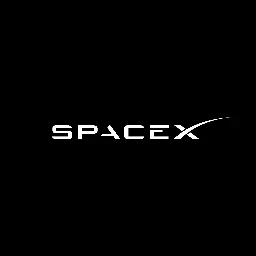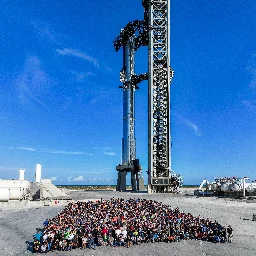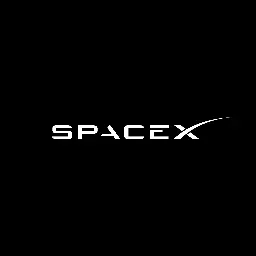The licence has been approved, the NOTAM and marine warnings published, closure announced.
Fish and Wildlife's comments were published yesterday. I gather that the document was deleted from the original location, but as I recall, it was pretty much copied and pasted into the body of the final FAA determination WRITTEN RE-EVALUATION OF THE 2022 FINAL PROGRAMMATIC ENVIRONMENTAL ASSESSMENT FOR THE SPACEX STARSHIP/SUPER HEAVY LAUNCH VEHICLE PROGRAM AT THE BOCA CHICA LAUNCH SITE IN CAMERON COUNTY, TEXAS. I remember the bit about "Per the table above, an average summertime thunderstorm at Boca Chica would deposit more water over the landscape than any single or all combined activations of the deluge system".
SpaceX called on the Federal Aviation Administration to correct a report to Congress warning that, by 2035, falling debris from U.S.-licensed constellations in low Earth orbit could injure or kill someone every two years if they deploy as planned.

>In an Oct. 9 letter to the FAA and Congress seen by SpaceNews, SpaceX principal engineer David Goldstein said the report relied on “deeply flawed analysis” based on assumptions, guesswork, and outdated studies.
The article contains details.
>In 2021, the FAA commissioned the Aerospace Corp., a federally funded nonprofit focused on space, to provide a technical assessment of the rise of LEO constellations and the risks posed to aviation and people on the ground by unplanned and controlled reentries of these satellites and the upper stages that launch them.
Someone from Aerospace mentioned the difficulties in such an estimate, and Goldstein's letter points out more problems.
In a much-anticipated Starship Q&A, no one asked about the stuff we all want to know.

Good analysis, from all I've heard.
>Anyone who keeps track of Elon Musk knows the world's richest man has a penchant for setting aspirational schedules for his companies....So, if you have an opportunity to interview him, why spend time asking Musk to prognosticate when one of his companies will do something years in the future?
and
>SpaceX's brilliant engineers certainly have creative ideas and novel plans to get Starship to the Red Planet, so why not ask Musk about them when you have him for a rare hourlong one-on-one conversation? It's the how that is most interesting now, not the when or why, especially for an audience interested enough to tune in at the IAC.
and
>But Mowry's questions missed the mark at a time when the Starship program is at a critical point, and he didn't probe with follow-up questions to tease out more insightful answers.
The whole article is worth a read, really.
Starlink @starlink Sep 23, 2023 · 9:29 PM UTC:
>Starlink is available on all 7 continents, in over 60 countries and many more markets, connecting 2M+ active customers and counting with high-speed internet!
>Thank you to all of our customers around the world 🛰️🌎❤️ → stories.starlink.com
The significance is as u/Obvious_Parsley3238 pointed out: "250k last march, 1 mil last december, 1.5 mil in may, 2 mil now".
The FAA says Varda launched its vehicle into space without a reentry license.

I'd seen the story about a spacecraft making a drug in microgravity and planning to land it in the US.
>However, the recovery of Varda's capsule is on hold after the Federal Aviation Administration and the US Air Force recently declined to give Varda approval to land its spacecraft in a remote part of Utah. TechCrunch first reported the FAA turned down Varda's application for a commercial reentry license.
>"Varda Space Industries launched its vehicle into space without a reentry license," an FAA spokesperson told Ars on Wednesday. "The FAA denied the Varda reentry license application on September 6 because the company did not demonstrate compliance with the regulatory requirements."
I don't have a transcription to hand and shouldn't take the time to do it myself. The image alone:
https://nitter.net/pic/orig/media%2FF6VfGnVWYAAB5tv.jpg
The FAA asked the Fish and Wildlife Service for "re-initiation of Endangered Species Act consultation" due to the booster bidet. FWS has 135 days to give a final biological opinion.
SpaceX's social media people are really outdoing themselves lately. This video is, I think, the second one showing recent Starlink deployment. The mirrored surface reflected the second stage so well is stunning.
I saw this somewhere on Xitter or The Other Place. I hadn't heard that there had been any sort of re-evaluation or more documents. The first document is dated 14 April 2023, so just before the first test, IFT-1:
> WRITTEN RE‐EVALUATION OF THE 2022 FINAL PROGRAMMATIC ENVIRONMENTAL ASSESSMENT FOR THE SPACEX STARSHIP/SUPER HEAVY LAUNCH VEHICLE PROGRAM AT THE BOCA CHICA LAUNCH SITE IN CAMERON COUNTY, TEXAS
>Starship/Super Heavy Vehicle Ocean Landings and Launch Pad Detonation Suppression System
and following letters and documents are below it, dated as early as October 2022. 122 pages, oy vey, but a lot of repetition. I don't know enough to know whether there was anything significant, unless the FAA saying (paraphrasing) "these are some changes and considerations, but they don't have significant impact". There were changes expanding the landing zones, and more biological details, and lots more math about sound effects.
The first image, of Super Heavy + Starship at night reflecting the launch tower -- is astonishing. Image 1
An easier way to reach the app in Android is the Google Play store. It's named Austin 311 from City of Austin. Some negative reviews, though, like (20 Jan 2023) "You can't report when your trash doesn't get picked up - easily 99% of the reason I ever call 311" and (9 June 2022) "App sucks. The categories are very limited and hard to locate. I should be able to search on a keyword and your app suggests appropriate categories. Where do i report a malfunctioning pedestrian cross signal, for example. Very disappointing!"
I just checked out the Web page. That has a search capability (I don't see one in the app), both built in via a Search text box, and the browser's own facility (except there are not many items per page). I think I prefer it, even on my phone.
But the Android app at least has a map of recent reports, which is a nice feature; I don't see it in the web page. It also has one central place to enter the reporter's info; it looks like the Web page has it on each request.
Brian Fuchs from the National Drought Mitigation Center spoke to KXAN about the factors that go into the drought map and what it would take to get us out of drought.

It's an interview with Brian Fuchs, a climatologist with the National Drought Mitigation Center, which publishes the Drought Monitor map. He talks about the center itself, He talks about how they determine drought, considering lots of different factors and their impacts. There's a distinction between short-term and long-term drought. He compares the current situation with 2011, which was actually the peak of a long drought that lasted until 2015 or so.
We're getting closer to bioregenerative life-support systems for astronauts.

Article by Jacek Krywko, 13 September 2023. No intro here, but a much older article says "a science and technology writer based in Warsaw, Poland. He covers space exploration and artificial intelligence research, and he has previously written for Ars about facial-recognition screening, teaching AI-assistants new languages, and AI in space.".
WOW! I have no knowledge of the field, but it looks informative. As articles go, it's fairly long.
It's about efforts to get "bioregenerative life-support systems", living life-support systems as needed for long space journeys and bases over yonder.
The first efforts its lists were plant-based, BIOS (Soviet) and CELSS (US).
>BIOS-3 experiments showed how much labor it took to operate this system. Results were bleak. Astronauts basically worked like full-time farmers just to keep it going.... There was very little control over what exactly the biological component was doing.
Then MELiSSA was proposed and implemented. It is bacteria-based. The great advantage is that each bacteria species does about one thing, and responds immediately to conditions, so humans can have much much more control. But it was a huge project:
>The project quickly grew into a gargantuan effort backed by 14 countries and over 50 institutes, universities, and companies.
Then
>In 2017, NASA founded the Center for Utilization of Biological Engineering in Space (CUBES), a conglomerate of federal agencies, industry, and academia, with the goal of building a demonstration biosystem for a future Mars colony....
>While MELiSSA was focused on fine-tuning the hardware and software and left biology intact, CUBES involves engineering all three to make them work seamlessly together.
So bacteria-based, but now with genetic engineering. Also looking at producing more, like plastics or papers or more.
It talks about one drawback of that approach: "The problem is that life, when pushed, sometimes fights back." The changes for more productions of nitrites or fatty acids or whatever are not adaptive for the organism, so it has an incentive to mutate back towards its original if that can breed faster.
There's also discussion of multiple stages with more and more capability.
And also discussion of funding. MELiSSA has continuing funding and is looking for a human prototype. CUBES has had some design work, "with, like, $15 million USD in five years".
Anyway, well worth considering, and the comments are more valuable than in many comment sections. I did see fuzzyfuzzyfungus noting his own lay experience in existing bioreactors (amplifying a point above), specifically "the occasions when very, very unhappy science types announce that we'll be shutting down production because some undesired strain that's a lot less useful but a lot better at survival than the desired strain had snuck in and it was time to bleach out the tanks and sterilize everything to hell and back were just a thing that happened on occasion".
Edit: other items mentioned in the comments:
A City on Mars: Can we settle space, should we settle space, and have we really thought this through?: upcoming book from the Weinersmiths.
Curiosity Finds Fairly Benign Radiation Environment on Mars
Covid on Mars: SF essay by Charlie Stross
This is related to @navi@lemmy.tespia.org's post about SpaceX no longer taking losses to produce Starlink satellite antennas. The article below refers to that one.
ArsTechnica, in "SpaceX projected 20 million Starlink users by 2022—it ended up with 1 million".
It's based on a Wall Street Journal article, which seems like a bit of a hit piece. The headline claim is absurd, as some comments pointed out: the projection was in 2015! It also points out that skeptics had always said that Starlink would not do well in cities, which would be a more valid criticism if Musk and Starlink didn't point it out first.
But there was this reported number:
>Actual Starlink revenue for 2022 was $1.4 billion, up from $222 million in 2021, according to the report. The documents apparently didn't specify whether Starlink is profitable.
It mentions numbers that Shotwell had previous provided and that may have been reported here. I'll add them to have more data in one place:
>SpaceX President and COO Gwynne Shotwell said in February that Starlink is expected to turn a profit this year. While Starlink's specific profit or loss is unknown, the WSJ previously reported that SpaceX overall "eke[d] out a small profit in the first three months of [2023] after two annual losses." SpaceX's Q1 2023 numbers reportedly included a $55 million profit on $1.5 billion in revenue.
The CNBC article had this, partially quoted in this ArsTechnica article,
>The company last provided an update on its global Starlink user base in May, when it said it had about 1.5 million customers. Hofeller did not specify what that total is now but said Starlink is "well over" that 1.5 million mark. The figure includes both consumer and enterprise customers around the world ...
The acting head of the Federal Aviation Administration said on Wednesday the agency could advance a launch license as early as next month for the SpaceX Starship rocket after a prior one exploded following a test launch in April.

>WASHINGTON, Sept 13 (Reuters) - The acting head of the Federal Aviation Administration said on Wednesday the agency could advance a launch license as early as next month for the SpaceX Starship rocket after a prior one exploded following a test launch in April.
>"We're working well with them and have been in good discussions. Teams are working together and I think we're optimistic sometime next month," acting FAA Administrator Polly Trottenberg told reporters on the sidelines of a conference.
>SpaceX would still need a separate environmental approval from the U.S. Fish and Wildlife Service before a launch. Trottenberg did not say how long that might take.
It has been noted that the last paragraph doesn't say that Trottenberg said that. It might have been the reporter's inference that it is needed, and Trottenberg may not have addressed it at all. Also, for the PEA, the FAA handled all of it, including interfacing with the U.S. FWS and all other governmental entities.
The xeet just had "Made on Earth by humans" and the picture. Sep 13, 2023 · 5:48 PM UTC, after the Starship first flight test, and we hope the second one will be soon.
Ozan Bellik @BellikOzan Sep 12, 2023 · 5:37 AM UTC:
------------ ------------
Months between 1st launch and 4th successful launch of every medium or heavier launch vehicle family that debuted in past 30 years & had 4+ successful flights:
-
Atlas V: 28
-
H-II: 30
-
Falcon [9]: 33
-
Vega: 36
-
Delta IV: 42
-
Atlas III: 43
-
CZ-5: 44
-
Ariane 5: 51
-
CZ-7: 59
-
PSLV: 97
-
GSLV: 172
Starship had its first full stack launch in April. If it matches Atlas V's 28 months, 4th successful flight would be in August '25.
Vulcan's maiden flight is NET December.
If it actually flies then (doubtful) and matches the quickest 4th flight of the past 30 years, we'd see that flight in April '26
(As a reminder, they're aiming to be flying ~twice a month by the end of '25.)
H2 '26 would by this measure be highly optimistic for the 4th successful flights of Ariane 6, New Glenn, and Neutron.
Let's not even get into Terran R.
As fast as RocketLab moves (22 mo.s for Electron for above metric), even Rutherford reportedly took ~3 years from first test firing to flight qualification, and 1 more year to fly.
Full engine firing of Archimedes is expected NET late '23. Flight before '27 is optimistic.
[replying to "A question/request: could you please list on which launch attempt each of the rockets achieved their respective 4th SUCCESSFUL launch?"]
-
Atlas V: 4
-
H-II: 4
-
Falcon: 5
-
Vega: 4
-
Delta IV: 5
-
Atlas III: 4
-
CZ-5: 5
-
Ariane 5: 6
-
CZ-7: 5
-
PSLV: 6
-
GSLV: 9
----------- ------------
In later xeets,
> Saturn V: 16 (Apollo 4 11/67, A6, A8, Apollo 9 3/69)
>Are we talking New Glenn? It's certainly possible [that it'll shatter records]. On the other hand it's their first orbital rocket, and I'm not even expecting a maiden flight in '24.
>[replying to: And people are deluded if they think a new entrant will do much better] Absolutely
>They might all do better. I'm not expecting much better. And I'm only expecting 2 of them to have had a launch by the end of next year.
>[Starship flights this year] I think that barring major regulatory obstacles, 1 more is likely, 2 more is plausible (if IFT-2 goes smoothly; even if no pad damage, if it doesn't fly true, there will be a mishap investigation). 3 seems like a stretch.
He bundles Falcon Heavy with Falcon 9 as the same family, but excludes Falcon 1.
>They include test flights
Taking the liberty of copying the text from Chris Bergin - NSF @NASASpaceflight Sep 8, 2023 · 2:08 PM UTC:
------------------------------
Additional background on the release:
The FAA oversaw the SpaceX-led investigation to ensure the company complied with its FAA-approved mishap plan and other regulatory requirements.
The FAA was involved in every step of the mishap investigation and granted NASA and the National Transportation Safety Board official observer status.
The mishap investigation report contains proprietary data and U.S Export Control information and is not available for public release.
------------------------------
And Abhi Tripathi @SpaceAbhi, way emphasizing the "SpaceX-led investigation" part:
------------------------------
I've seen dozens of "Twitter experts" misunderstand this (often time by adding "Breaking..." to their post for extra clicks) so let me reiterate and further explain what Chris details below.
SpaceX LEADS the investigation. SpaceX issues the corrective actions. They pre-write a mishap investigation plan before they even launch. Then they execute their plan if they have an actual mishap. The FAA formally reviews the plan and also the investigation results and SpaceX-recommended corrective actions (but...informally they already know what's coming because of close coordination). The FAA provides feedback, and could recommend adding something if warranted. Their main job is to verify and enforce that SpaceX does what SpaceX said it will do once they approve the final report. In reality, 90% or more of corrective actions may be finished before the report is even formally submitted. Just depends on how well the root cause(s) are understood and easy to fix.
The general public often believes the FAA writes all the corrective actions and has a large team of people conducting the investigation with a heavy hand (e.g. "the big bad government"). No way. I doubt that will ever be the case for any mishap or anomaly. That is simply not how the government is staffed.
The FAA (and their NASA colleagues who have the relevant technical expertise) are typically in super close contact with the SpaceX team through the head of SpaceX Flight Reliability (where the chief engineers reside).
The statements released by the government are usually kept vague but factual, often to the great dismay of social and traditional media (as well as "stans") who want a juicy bite, ideally brimming with conflict. It is in a government agency's best interest to maintain flexibility and work with who they are overseeing...while keeping the politicians and click-bait journalists and influencers away. Inflammatory statements could rally politicians to one side or the other, and then SpaceX and the FAA's job could become charged and harder. Many people want to see that happen for many reasons.
If the final approval stalls, often times it is over a corrective action that was too open to interpretation. As an example of what I mean, if a corrective action is worded as such: "Redesign of the launch pad to increase its robustness." Ooh boy. So you want to break that down into discrete actions defining what "robustness" means.
If you want to learn more about the FAA's role, read their website here: https://www.faa.gov/space/compliance_enforcement_mishap
TL;DR Flight Test 1:
- During ascent, the vehicle sustained fires from leaking propellant in the aft end of the Super Heavy booster, which eventually severed connection with the vehicle’s primary flight computer. This led to a loss of communications to the majority of booster engines and, ultimately, control of the vehicle.
- unexpected delay following AFSS activation
Changes:
- implemented leak mitigations and improved testing on both engine and booster hardware ... expanded Super Heavy’s pre-existing fire suppression system in order to mitigate against future engine bay fires
- enhanced and requalified the AFSS to improve system reliability
- hot staging
- new electronic Thrust Vector Control (TVC) system for Super Heavy Raptor engines
- upgrades to the orbital launch mount and pad system: include significant reinforcements to the pad foundation and the addition of a flame deflector
I had trouble accessing it -- for a while, it didn't show me today's post (8 Sep 2023). So I'm going to take the liberty of pasting it here.
----------------------------------------------------------
September 8, 2023
Upgrades Ahead Of Starship’s Second Flight Test
The first flight test of a fully integrated Starship and Super Heavy was a critical step in advancing the capabilities of the most powerful launch system ever developed. Starship’s first flight test provided numerous lessons learned that are directly contributing to several upgrades being made to both the vehicle and ground infrastructure to improve the probability of success on future Starship flights. This rapid iterative development approach has been the basis for all of SpaceX’s major innovative advancements, including Falcon, Dragon, and Starlink. SpaceX has led the investigation efforts following the flight with oversight from the FAA and participation from NASA and the National Transportation and Safety Board.
Starship and Super Heavy successfully lifted off for the first time on April 20, 2023 at 8:33 a.m. CT (13:33:09 UTC) from the orbital launch pad at Starbase in Texas. Starship climbed to a maximum altitude of ~39 km (24 mi) over the Gulf of Mexico. During ascent, the vehicle sustained fires from leaking propellant in the aft end of the Super Heavy booster, which eventually severed connection with the vehicle’s primary flight computer. This led to a loss of communications to the majority of booster engines and, ultimately, control of the vehicle. SpaceX has since implemented leak mitigations and improved testing on both engine and booster hardware. As an additional corrective action, SpaceX has significantly expanded Super Heavy’s pre-existing fire suppression system in order to mitigate against future engine bay fires.
The Autonomous Flight Safety System (AFSS) automatically issued a destruct command, which fired all detonators as expected, after the vehicle deviated from the expected trajectory, lost altitude and began to tumble. After an unexpected delay following AFSS activation, Starship ultimately broke up 237.474 seconds after engine ignition. SpaceX has enhanced and requalified the AFSS to improve system reliability.
SpaceX is also implementing a full suite of system performance upgrades unrelated to any issues observed during the first flight test. For example, SpaceX has built and tested a hot-stage separation system, in which Starship’s second stage engines will ignite to push the ship away from the booster. Additionally, SpaceX has engineered a new electronic Thrust Vector Control (TVC) system for Super Heavy Raptor engines. Using fully electric motors, the new system has fewer potential points of failure and is significantly more energy efficient than traditional hydraulic systems.
SpaceX also made significant upgrades to the orbital launch mount and pad system in order to prevent a recurrence of the pad foundation failure observed during the first flight test. These upgrades include significant reinforcements to the pad foundation and the addition of a flame deflector, which SpaceX has successfully tested multiple times.
Testing development flight hardware in a flight environment is what enables our teams to quickly learn and execute design changes and hardware upgrades to improve the probability of success in the future. We learned a tremendous amount about the vehicle and ground systems during Starship’s first flight test. Recursive improvement is essential as we work to build a fully reusable launch system capable of carrying satellites, payloads, crew, and cargo to a variety of orbits and Earth, lunar, or Martian landing sites.--
Reported by Chris Bergin - NSF @NASASpaceflight on Xitter, video at Sep 6, 2023 · 10:32 PM UTC
>Here comes the first section of the new Crew Tower for SLC-40! Initially will be used for Cargo Dragon launches from SLC-40, but eventually also for crew. It adds redundancy to 39A.
>nsf.live/spacecoast
then this video
>Tower on the loose at KSC!
then this video
>Passing the grown-up Towers.
then this video
>SLC-40 Tower section passing 39A's historic FSS and the new Starship Tower.
>High resolution satellite images taken on September 3rd captured SpaceX's new crew access arm for SLC-40 poking out of Hangar M.
Also an overhead picture of SLC-40,
>SLC-40 is being prepared for the arrival of the tower segments ahead of stacking with a large crane being assembled, and there's also a hole in the roof of the hangar..?
>Full image: http://soar.earth/maps/15725 @Soar_Earth
Also a couple of pictures for Relativity and Blue Origin.
Unrolled tweet thread at threadreaderapp.com by Ryan Hansen Space @RyanHansenSpace. It's a look at the details of the steel plate parts and assembly under the Orbital Launch Mount.
More pour info, this time from tweets from Zack Golden @CSI_Starbase. The truck counts basically match those from @LettuceTurnipTheBeet@lemm.ee's post earlier.
SpaceX has received their final load of concrete for today's Orbital Launch Mount foundation work. Here are the totals after the 15.3 hour marathon:
June 25th - 132 Truck loads
July 3rd - 171 Truck loads
Total Volume = 2,302 m^3 = 3030 yd^3
Total Weight = 5,411 Tons
For reference, a Fully loaded Starship ~ 5,000 Tons
Note: There were 4 additional trucks that showed up but were turned back around without offloading.
Shoutout to agents @VickiCocks15 and @SpmtTracker for keeping track of all these.
4:11 PM · Jul 3, 2023
and
Obviously this number is significantly greater than we predicted. For those who asked, that previous number was not considering the area in yellow, which were also completed today. This area is technically outside of the true foundation of the OLM
with a picture by RGV Aerial Photography.
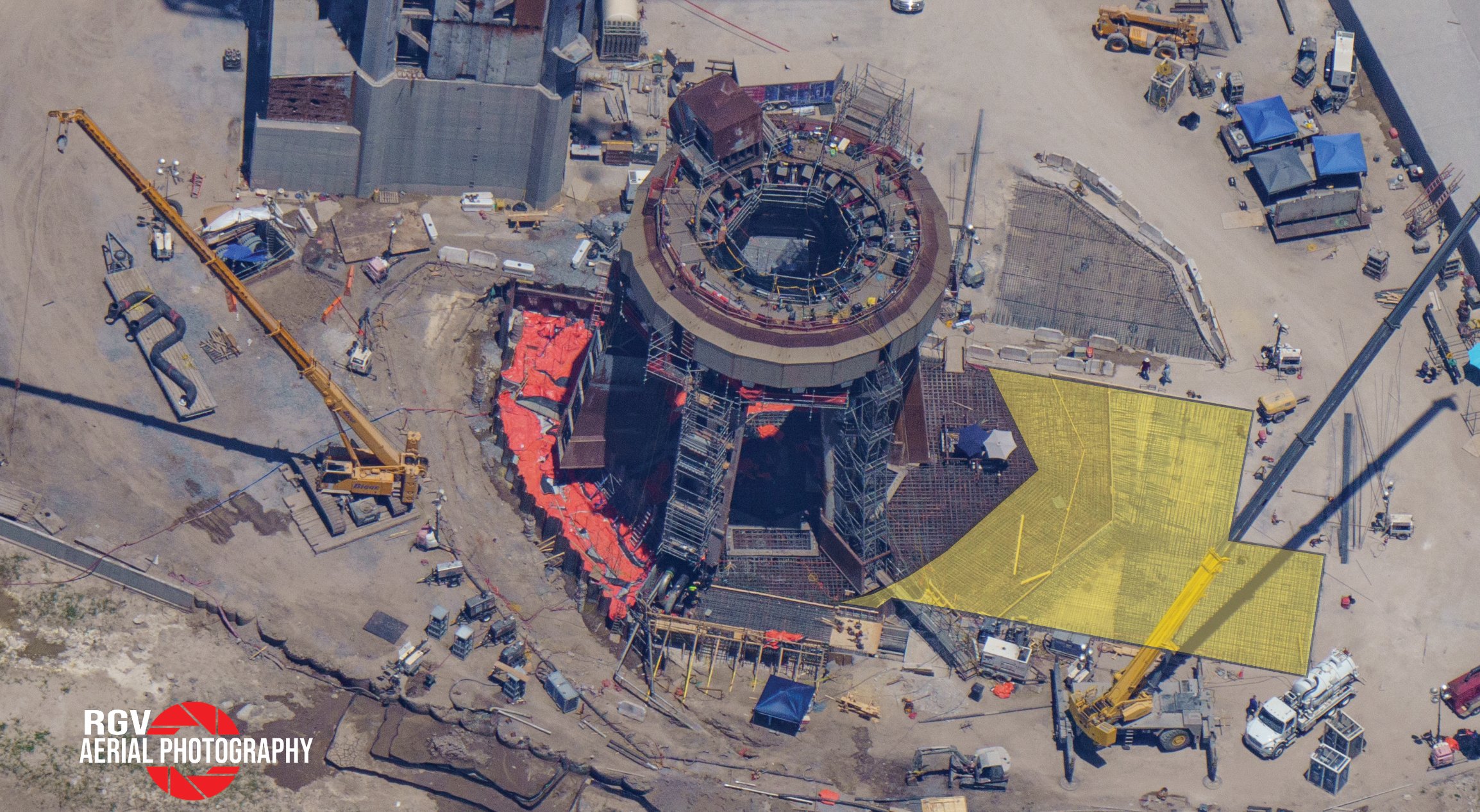
Same to you, bud! I figure I'll keep blowing on the embers. Either the flame will catch (& I get to boast "I was into Lemmy before it really took off"), or my lungs will get too tired.
So the big news of the day and night was what is believed to be the center plate of the water deluge system. It is thought that it will be placed directly under the Orbital Launch Mount.
@LettuceTurnipTheBeet@lemm.ee already posted (at top level) "CSI Starbase video on new Deluge system", a deep dive part 1. The URL I see for the post is https://lemmy.world/post/879748 , because that's how I access this. The canonical one is https://lemm.ee/post/530280 .
CSI Starbase SPMT Tracker @SpmtTracker posted a tweet with a picture of what is very likely to be a vertical stand for the center plate. The image is on Imgur. The tweet is here. Ryan Hansen Space @RyanHansenSpace tweeted a rendering of how it might look under the OLM. This should be the image:
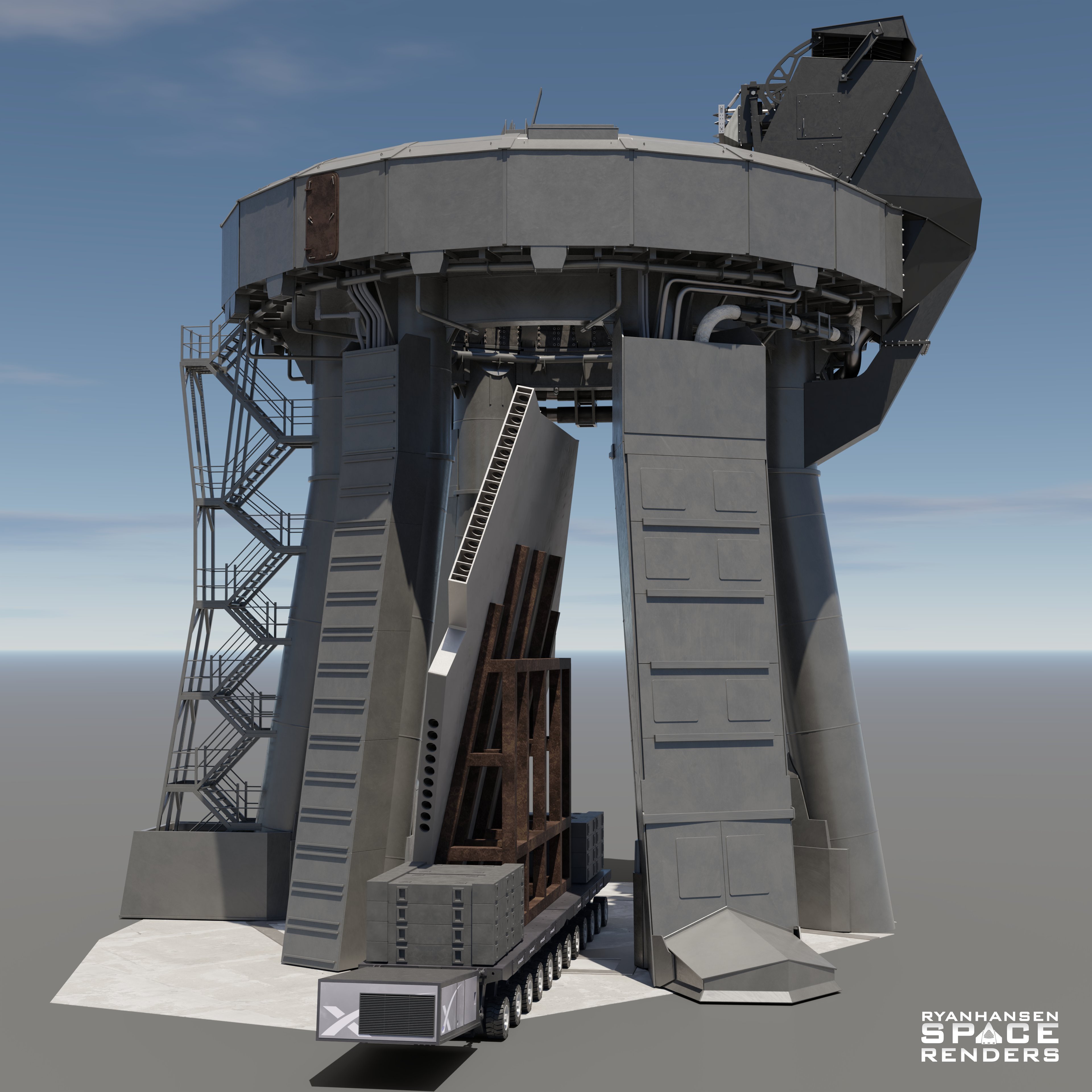
@LettuceTurnipTheBeet@lemm.ee posted below (if sorted by new) a link to a 13-minute video by Starship Gazer, of people working in the tent on the center plate. https://lemm.ee/comment/534238 . Someone commented that, from 4 minutes on, it's comedy gold. People were grinning around them. I'm told that someone is standing on top of the cheater pipe at one point.
NASASpaceflight posted a video of the rollout of the center. It's about 1 hour 26 minutes long. The stand / jig was on the first truck; the center plate with some people on it was on the next truck. The clearest views are about 17 minutes on.
I also saw this in The Other Place:
[Meta] Twitter is now throwing up a nag screen to force users to log in to view content, supposedly on a temporary basis. Since a lot of the content here links to Twitter, this could be inconvenient to those without an account.
A simple solution is to link to the embedded version of the Tweet, like so. Simply type:
And replace xxx with the Tweet id.
The other solution is to link to an archived version of a tweet.
(I think the last is like Internet Archive.)
What about it!? @FelixSchlang tweet from 3:03 PM - Jun 29, 2023:
It happened!!!
SpaceX opened the wall to the inventory tent and revealed one of the water deluge plates to us up close and countless other things in there!
High res pictures for supporters on all platforms coming soon!
In a reply, they said it looks to be upside down.
In The Other Place, u/warp99 wrote,
Looks like the segments are around 400mm thick and constructed from 40mm (38mm=1.5"?) steel plate The overall shape is a hexagon about 10m across the flats with each corner notched out.
They also speculated on how to weld the edges together: maybe put them on a stand above the final location, weld them from above and below, attach cranes and remove the stand, lower into place.
Starship Gazer (as seen on Nitter) had more pictures.
I linked to two possible pictures in my reply here.
Ship 25 completes a six-engine static fire test at Starbase in Texas
11 seconds. In the audio, only a little bit of HONK at the end.
Someone pointed out that the flames start out as a triangle, but then switch rotated 60 degrees when the vacuum engines start - V to ^.
A comment in The Other Place mentioned that it looks like a little spalled concrete at 4 seconds in.
In a later tweet, Musk called it a "Key milestone completed for flight 2".
In a Twitter Space with @ashleevance, @elonmusk shares that Starship will hot-stage during the next flight, lighting engines on the ship with some engines still running on the booster, as to Never Stop Thrusting!™️
"Hot staging" is firing the upper stage engines while it's still nominally attached to the lower stage (like resting on or loosely attached). The advantages that I gather exist: It's fast. It takes care of stage separation without needing springs or little rockets or a flip or anything. Before firing a liquid-fueled stage that may have gases in a tank ("ullage"), you have to settle the contents so that the engine intakes suck only liquid (maybe using "ullage rockets"), but if you're still accelerating at separation, that's automatically taken care of.
But if you intend to reuse the first stage, well, I wonder whether six engines igniting will be too hard on it.
Apparently U.S. Titan rockets, a lot of Soviet / Russian ones (Soyuz, Progress, N-1), and (some?) Chinese Long March rockets were designed with hot staging.
Joe Barnard @joebarnard replies: "'okay so when I hot stage it’s “an anomaly” and I’ve “torched another flight computer” but when SpaceX does it it’s fine???'
Edit: There's now an article up at SpaceNews, "SpaceX changing Starship stage separation ahead of next launch", which includes
"We made sort of a late-breaking change that’s really quite significant to the way that stage separation works," Musk said, describing the switch to hot staging. "There’s a meaningful payload-to-orbit advantage with hot-staging that is conservatively about a 10% increase."...
Musk said that, for Starship, most of the 33 Raptor engines on the Super Heavy booster would be turned off, but a few still firing, when the engines on the Starship upper stage are ignited. Doing so, he said, avoids the loss of thrust during traditional stage separation, where the lower stage shuts down first.
Doing so requires some modifications to the Super Heavy booster. Musk said SpaceX is working on an extension to the top of the booster “that is almost all vents” to allow the exhaust from the upper stage to escape while still attached to the booster. SpaceX will also add shielding to the top of the booster to protect it from the exhaust.
“This is the most risky thing, I think, for the next flight,” he said of the new stage separation technique.
Besides the change in stage separation, Musk said SpaceX made a “tremendous number” of other changes to the vehicle, “well over a thousand.” He didn’t go into details about the changes, ...
SpaceX also made improvements to the Raptor engines, with Musk describing the vehicle launching in April as using a “hodgepodge” of engines built over time. The Raptors on the new vehicles include changes to the hot gas manifold in the engine to reduce fuel leakage.
Those changes, he said, gave him more confidence in the success of the next launch. “I think the probability this next flight working, getting to orbit, is much higher than the last one. Maybe it’s like 60%.” In an online conversation in late April, he estimated a “better than 50% chance” of success on the next launch.
In another note, Musk finally learned some caution!
Musk, asked about any plans for a Starlink IPO, declined to comment. “It would not be legal for me to speculate about a Starlink IPO,” he claimed. “I think it’s against regulations to talk with any kinds of specifics about a future public offering.”
Edit: Peter Hague PhD @peterrhague: Thus far Musk estimates $2-3bn invested by SpaceX so far in Starship. The price of a single SLS launch
